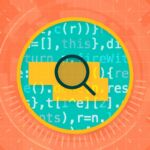
In the past few years, the tech market has been unveiling the latest big thing: the Internet of Things (IoT). As a concept, IoT provides a way to wirelessly connect devices to a network and transfer data without human-to-human or human-to-computer interaction. The ability to control devices remotely has become popular with consumers. These days, security systems, thermostats, cars, electronic appliances, speakers and more all offer IoT.
Outside the home, companies use interconnected devices in their engineering processes to build market-specific products and services. In fact, according to a report by the statistics portal Statista, the world is expected to witness over 75 billion connected devices by 2025.
This unprecedented growth in the number of connected devices will impact security, cost, and identity at large. This is because traditional authentication systems were programmed for human identities, whereas IoT devices and objects use unique identifiers (UIDs).
Identity and Access Management, and Why It’s Essential to IoT
The role of access and identity management (IAM) in IoT is expanding like never before. IAM is focused on identifying people and managing access to different data types (like sensitive data, non-sensitive data, or device data). IAM helps identify devices, too, while managing user access to data, thus safeguarding against breaches and malicious activities.
In the age of IoT, the issue is not that connected things can be accessed effortlessly, but rather that access to these things poses risks, and thus, must be protected.
What are the key identity management challenges in IoT?
Digital identity management is one of the crucial areas where IoT falls short. A primary reason is that security concerns may leak to disastrous consequences like financial loss, confidentiality leaks, and data tampering.
Watch out for the following challenges that may spring up while incorporating the role of identity management in IoT:
Credential Abuse
Credential abuse is the deliberate use of stolen credentials, like usernames and passwords, to access sensitive data. At the workplace, this can happen when employees innocently share their passwords with coworkers. They may do this to help colleagues avoid IT delays that can occur while renewing a forgotten password.
In most cases, unlawful intent is what drives credential abuse. Lack of a proper IAM or CIAM solution allows hackers unintended access to places they could exploit.
A release by BeyondTrust finds that 64 percent of respondents suffered direct or indirect breaches due to employees abusing access privileges.
Getting back to IoT, not many of those interlinked devices come with a password management system strong enough to shield data at a corporate level. According to a study by the analysts at ABI Research, the lack thereof means an excellent opportunity for malicious drivers.
Default Password Risks
One of the major problems with IAM and IoT devices is that a lot of them come with default passwords. Though users are instructed to change it later on, not everyone acts responsibly.
Nevertheless, those who change their default passwords use common, easy-to-guess username/password pairs. This is a risky habit.
To address this rising concern, California legislators have passed the CCPA (effective January 1, 2020). This act makes it mandatory for connected IoT devices to encrypt unique passwords if these devices are produced or sold in the state of California.
It seems like that’s the right step in securing privacy. But there is a downside, too.
If everyone in the business is aware of the password, there will be people who shouldn’t have access but will end up with unnecessary privileges.
Virtual Eavesdropping
Most IoT devices are linked to virtual personal assistants that are always listening and collecting information. But not many companies are clear about how they plan to use such information. Therefore, there’s always an understandable worry that personal assistants might spill out company secrets.
To truly address these challenges, the following are a few key security capabilities on which enterprises can design a purpose-built solution:
- End-to-end encryption to protect data at endpoints and everywhere in between.
- Fully-equipped preference and consent management system for users to control their IoT ecosystem.
- Adaptive authentication and data access regulations for contextual control.
Approaching Identity Management in the IoT Era
Historically, employee-based identity and access management (IAM), or customer identity and access management (CIAM) platforms, were made for user devices like smartphones and computers. Today, the concept has drastically evolved to include every smart device, object, and service available within the IT ecosystem.
When integrating IoT with your access management tools, you should consider these steps:
- Create a flexible identity lifecycle for IoT devices.
- Determine a process for registering IoT devices.
- Set up security safeguards.
- Outline policies for protecting personally identifiable information (PII).
- Establish company procedures for access control.
- Create a well-defined authentication and authorization process for connected devices.
Conclusion
IoT devices open up access to a vast amount of valuable data. Therefore, the role of identity management in IoT architecture must include robust data protection strategies. To protect your company, be sure to speak with an expert about integrating your IoT with your CIAM or IAM platform.




 New Episode
New Episode





 Latest IoT News
Latest IoT News









